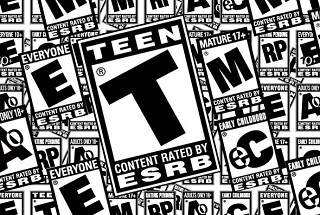Today begins a new chapter in the process of video game age ratings.
Those “E for Everyone,” “T for Teen,” and “M for Mature” icons you see on every game sold at major retail stores have been based on the same submission procedure since the Entertainment Software Rating Board’s inception in 1994.

Today, however, the process changes for the first time. For games slated for release exclusively on the PlayStation Store, Xbox Live Arcade, Wii Shop, DSi Shop, 3DS eShop, or future digital download platforms, ratings will be issued before any pair of human eyes ever sees the game.
Instead, publishers will fill out a detailed questionnaire about the kinds of content – violence, sexuality, drugs, alcohol, smoking, language, gambling, and crude humor – that are in the game.
Upon completion of the questionnaire, a rating will be automatically generated via a complex algorithm that takes into account everything from whether or not sexual activity is depicted, to what kind of point-of-view the game uses (first-person, third-person, etc).
“The ESRB rating process that has been in use since 1994 was devised before the explosion in the number of digitally delivered games and devices on which to play them. These games, many of which tend to be casual in nature, are being produced in increasing numbers, by thousands of developers, and generally at lower costs,” said ESRB president Patricia Vance in a statement.
Previously, publishers of independent or low-budget games have been able to take advantage of the ESRB’s “Value” submission price, which is drastically cheaper than what high-profile publishers pay. The organization didn’t say how much a publisher will have to pay to get a rating from the new autonomous process, but it would make sense that most of the “Value” publishers are those releasing titles exclusively to download platforms.
All games that go to retail will still rely on the old submission process. This entails filling out a different questionnaire and submitting video of the most extreme content captured on DVD. ESRB staff then watches the content like a movie and assigns a rating using the DVD and questionnaire as references.
As always, the ESRB will test games after they’re released to ensure the publisher disclosed all the necessary content, and can take punitive action if there is a discrepancy.






